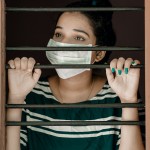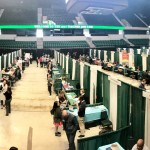We’ve never done this before!
There’s no playbook for this scenario!
I feel like we are building the plane while flying it!
I’ve heard, and said, all of these statements over the past several months. Living through a global pandemic is something most of us have never experienced. Those who were alive during the Spanish Flu pandemic of 1918-1919 were too young to have any clear memories. We must rely on historical documents to tell the story.
I’ve been reading up on some of the issues faced by schools, municipalities, and families. The U.S. was a much different place socially and economically during the last pandemic. There are still some fascinating parallels and disparities that come to light. An article “3 Lessons From How schools responded to the 1918 Pandemic Worth Heeding today,” from The Conversation, academic rigor, journalistic flair caught my attention.
School Nurses
School nurses were first introduced in U.S. public schools in 1902. By the time the Spanish Flu Pandemic hit in 1918, schools were well equipped to manage health issues. A licensed nurse was onsite at many schools, and some districts had a dedicated doctor. This allowed teachers and administrators to focus on academics and know that there was a qualified health expert on campus at all times for students and parents.
Partnerships
“It takes a village to raise a child” is a trendy saying. It is quite right. It takes an entire village to work together to ensure every citizen’s health, safety, and education from birth to death. Public health officials, education boards, and local political leaders could present a united front that encompasses the entire community’s needs. I have not seen that happening. I have seen all of these groups work independently and be very cautious, not “overstep” any boundaries.
Tie Education to Other Priorities
We have tied education to so many other priorities, it’s hard to tell what skill set is needed to be a teacher. We are pushing out so many programs through the schools, it’s hard to keep them all aligned. Our schools are a community hub—which is appropriate. Are we, as a society, putting too much responsibility on too few people to care for our children?
In 1916 the U.S. Bureau of Education proclaimed that the “education of the schools is important, but life and health are more important.” Reformers of the period, known as the Progressive Era, took that notion to heart. In addition to school nurses, they established school lunch programs, built playgrounds and promoted outdoor education.
One of the stark contrasts I see between 2020 and 1918 is that we expect our schools to do more, giving them less. According to the article, 60% of schools have a full-time nurse, and 25% have no nurses. Playgrounds are equipped with fundraising efforts, not school budgets. Students sit in desks and have strict numbers of minutes for being “on task” learning for schools to receive funding. This cuts into the amount of outside playtime significantly. I remember taking a group of students to a local park for an end of the year reward, and they kept asking what they could do. They had not had enough time of unstructured play to know how to play at the park for an hour!
This disparity is NOT the fault of the teacher or building administrator. Most teachers I talk to want their students to have creative, open-ended time. Mandates from federal and state agencies requiring high stakes testing for every student every year have significantly impacted our schools and classrooms’ climate. They have cut programs that build creativity and collaboration. Almost any subject or program that is not directly measured on the high stakes tests is at some time considered “expendable.”
There are significant issues in our education system that need to be addressed. The Pandemic of 2020 puts a magnifying glass on many of those issues.
I want to know how we can take the three lessons outlined here and work together as a collective village to IMPROVE public education.
Will it cost money? Yes, you must make a significant investment in ANYTHING if you want a return.
Will it happen immediately? Probably not. We didn’t get where we are in 1 or 2 years; it took decades. It will probably take that long to rebuild.
How will YOU build up education and educators for a better tomorrow?
Article referenced: “3 Lessons From How schools responded to the 1918 Pandemic Worth Heeding today,” https://theconversation.com/3-lessons-from-how-schools-responded-to-the-1918-pandemic-worth-heeding-today-138403










Comments 1
I was really hoping that this situation would help us build up our communities in order for our schools to go back to being educational insituations. I would love to see people start to work together in order to ensure that every individual has food, whether students are in school or not. I would love to see every family get the mental health supports they need, not from the school but from their community. We have an obligation not just to put the burden on our schools but to build up our communities.